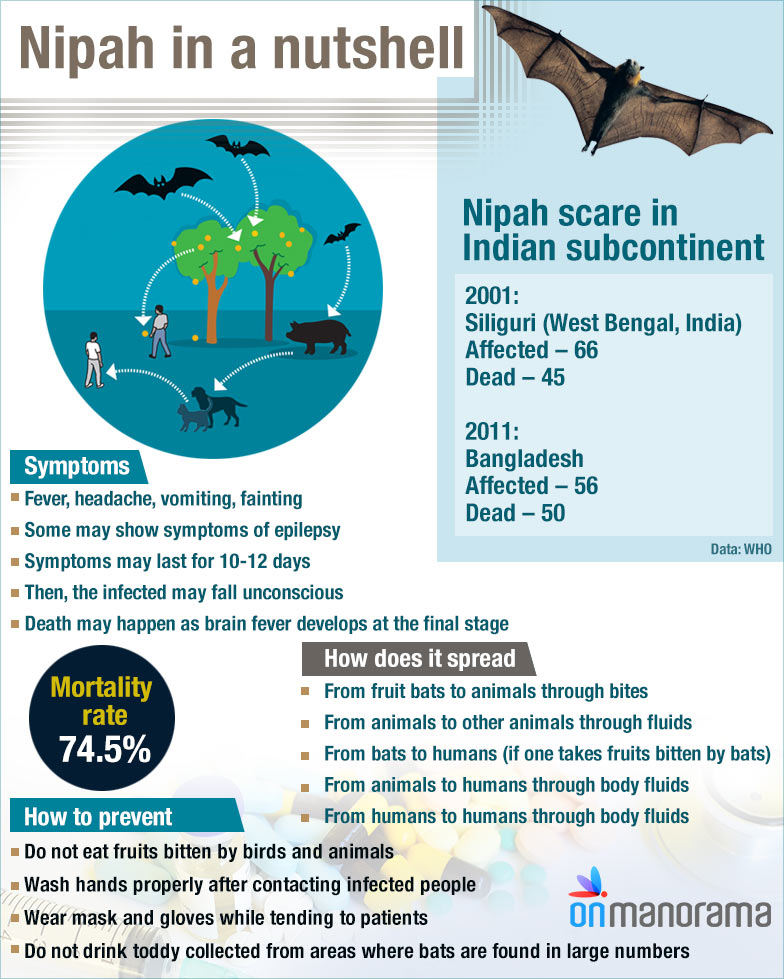Death of several people due to a rare brain fever in Kozhikode district of Kerala has spread panic across the state with the presence of the dangerous Nipah virus (NiV) being confirmed in blood samples of at least two of the deceased. The National Institute of Virology in Pune has confirmed that one of the several people undergoing treatment in the district has also been infected by the virus.
What's Nipah virus and why should one take all possible precaution to avoid contracting it? Here's a fact-check.
Nipah's origin
The virus was first identified in Kampung Sungai Nipah area of Malaysia in 1998 when a brain fever epidemic broke. The disease spreads from fruit bats to humans as well as animals. Most of those infected people were workers at pig breeding centres. The virus can also pass on to humans from fruits that have been touched by bats. It could spread from infected people to others. No vaccine have been developed yet.
The NiV infection was reported later in Bangladesh in 2001 after it spread to humans who consumed date palm sap contaminated by infected fruit bats. According to WHO, human-to-human transmission has also been documented, including in a hospital in India.
It was reported in many studies that there was a threat of further outbreak of this dangerous disease larger on the Indian subcontinent.

Signs and Symptoms
Infection with NiV is associated with encephalitis (inflammation of the brain). The disease begins with breathing difficulty, terrible headache and fever and progresses to brain fever. Death rate among infected people is 74.5 per cent.
NiV infection in humans has a range of clinical presentations, from asymptomatic infection to acute respiratory syndrome and fatal encephalitis, says WHO. The primary treatment for human cases is intensive supportive care.
Transmission
Transmission of NiV to humans occur after direct contact with infected bats, infected pigs, or from other NiV infected people.
In March 2018, WHO had listed some eight potential global diseases which could potentially trigger deadly global epidemic in the near future, calling for urgent measures to accelerate research and development to tackle it. These diseases pose major public health risks and further research and development is needed, including surveillance and diagnostics, a WHO statement said.
Read: Latest Kerala News | Kamal Haasan, Pinarayi discuss Karnataka outcome over lunch

























 The virus was first identified in Kampung Sungai Nipah area of Malaysia in 1998 when a brain fever epidemic broke. Photo: iStock Images
The virus was first identified in Kampung Sungai Nipah area of Malaysia in 1998 when a brain fever epidemic broke. Photo: iStock Images